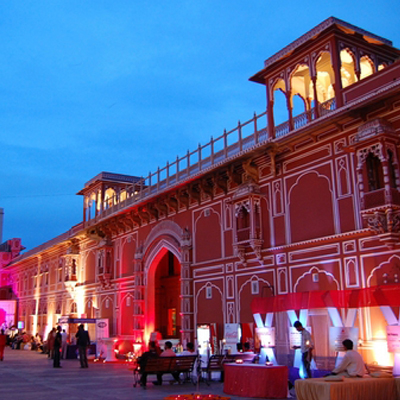
Activities In Jaipur
Jaipur was built by Sawai Jai Singh II and construction started in 1727. Sawai means "extraordinary" and Jai Singh was awarded this title by the Mughal Emperor Aurangzeb. He was a keen scholar and a man we can say in historical hindsight to have been ahead of his time. Jaipur was planned to be a purpose-built capital to the south of the old capital at Amber. It was named the "city of victory" and took 6 years to complete. Jai Singh II planned for the streets and squares to be built in a mathematical grid of 7 squares to represent the ancient Hindu map of the Universe.
When Prince Albert, later King Edward VII, visited Jaipur in 1876 it was decided to make an impression and cut down the glare and put a pink wash over the buildings. To this day the buildings of the old city are still maintained with this uniform rose pink wash, and Jaipur is universally known as The Pink City. Today Jaipur is a modern metropolis with a busy commercial centre, and yet its rich history of palaces and forts has been preserved, allowing the different parts of the city to coexist, creating a modern state capital and a city proud of its heritage.
While you’re in Jaipur you might want to include some of the following. The colourful Tripolia bazaar and streets around Badi Chaupur, in the Walled City, where you will find the puppet-makers, silversmiths and many other craftspeople at work. The City Palace in the old city is a large complex renowned for its treasures and the museum within houses displays including miniature paintings, manuscripts, Mughal carpets, musical instruments, royal costumes, weaponry, and much more. The palace is home to two Giant Urns listed in the Guiness Book of Records as the world's largest silver objects. These contained water from the Ganges and were used by Madho Singh for his use while on a visit to London in 1901. Interestingly at that time, the water from the Ganges was considered more drinkable than that in London.
Jantar Mantar is an open-air observatory near the City Palace complex. It was built by the founder of Jaipur, Sawai Jai Singh II, and is one of five that were built by him. Today this is the best-preserved observatory in India and much admired. The instruments give insight into the ancient knowledge and ways of measuring time, location of stars and constellations, the sun's declination, meridian, and altitude.
Hawa Mahal "The Palace of Winds" is a well-known landmark in the Old City and here in the old days the royal women would have watched royal processions from behind stone carved lattice windows. Today it houses a museum showcasing collections of the past and present.
The hills to the North and east of Jaipur are where one can find forts and temples reachable only by steep paths. Nahargarh or the "Tiger Fort" is located on an edge of a hill to the north of Jaipur. A good reason to visit here are the wonderful views of Jaipur that can be enjoyed from the high walls of the fort.
To the east 3km from Jaipur are the temples of Galta located in a narrow ravine. A freshwater spring ensures that two tanks are filled with water creating a home for thousands of macaque monkeys in an otherwise dry valley. The monkeys have become an attraction here as much as the temples.
Amber (also spelt Amer) is the site of the most-visited fort in Rajasthan. The oldest parts of the village of Amber are really interesting and well worth taking time to walk around.
A walking tour is also a great way to experience Jaipur’s markets and there are other walks in older neighbours of the city as well as those focusing on temples, havelis, artist quarters and more.